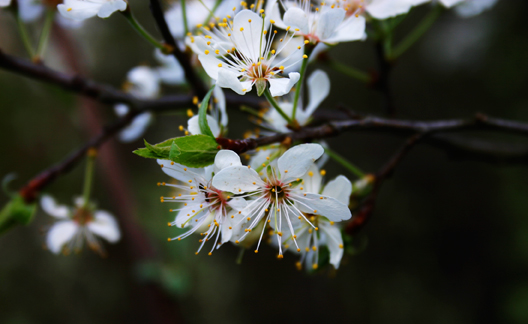Wild Plums
by Joshua Heston
The wild plum (Prunus americana) is a herald of the seasons. Mid-spring, the thckets are a mite hard to miss. The plum blossoms appear as white clouds suspended above the tangle of thicket branches. The flowers’ rose-like smell is on the air in clouds.
Wild plums are extremely common throughout the temperate climates of North America, growing in thickets and thus providing ideal cover for songbirds, rabbits, chipmunks and field mice. Beneath the canopy, soft moss grows thickly. The “thin shade” as described by Laura Ingalls Wilder is often deep and prairie grasses languish.
There is something magical in a wild plum spring. The blossoms are more than white and, on the years the blooming coincides with a full moon, thickets appear to glow of their own, inner light. A gift of the night.
All too soon the blossoms are gone. The fading white petals, brown and trampled into the earth, mark the end of another season. The shade deepens, the leaves are thick. Young green plums, barely larger than their seeds, slowly increase in size.
By late summer, if the season is a good one, wild plums crowd the branches. About the diameter of a half-dollar, the fruit is a riot of personal color — light purple blush fading to a deep rose and yellow. If the thicket happens to be a good one, the plums will be syrupy sweet with just a twinge of sour, pulpy bite. All the flavors of rose blossom scent, summer sun and autumn gold infused in a single, sweet berry.
A late afternoon’s light filters through oval, serrated leaves and irregular, twisted branches. There is a hum in the air, that of sugar-hungry wasps and bees. A warm, dry breeze gusts, leaves ripple, and wild plums gently drop to the ground.
In large quantities, plums can be dried for winter or processed into jams, jellies, conserves.
Wild plum season — now largely forgotten — has been the highlight of the late summer season likely since families lived on this continent. This moment has been quietly celebrated by countless First Nation families, the Lakota, the Osage, the Hidatsa, and by earlier families whose names were lost in the fading memories of time.
This moment has been celebrated by pioneer children, children whose families had taken a brave step into a challenging, dangerous but promising new world. It is comforting to realize this cycle of things has repeated, near-identically, season after season, year after year, for millennia. Sadly, something like plum season is such a simple thing it is easily forgotten. As trucked-in-and-packaged food became readily available in the Western world, our ways moved further and further from the rhythm of the land.
Winter comes. The season’s leaves are brushed to the ground, dry and brown. The plum thicket’s twisted branches trace outlines on a cold sky. Snow blankets the mountains and plains. But beneath, rabbits and field mice hunker down in the blue filtering light — and another season is born with all the promise of the past.
March 1, 2014
From Laura Ingalls Wilder
“When they came to a plum thicket they set down their big pails. They filled their little pails with plums and emptied them into the big pails till they were full. Then they carriedthe big pails back to the roof of the dugout. On the clean grass Ma spread clean cloths, and Laura and Mary laid the plums on the cloths, to dry in the sun. Next winter they would have dried plums to eat.
“The shade of the plum thickets was a thin shade. Sunshine flickered between the narrow leaves overhead. The little branches sagged with their weight of plums, and plums had fallen and rolled together between drifts of long grass underfoot.
“Some were smashed, some were smooth and perfect, and some had cracked open, showing the juicy yellow inside.
“Bees and hornets stood thick along the cracks, sucking up the juices with all their might. Their scaly tails wiggled with joy. They were too busy and too happy to sting. When Laura poked them with a blade of grass, they only moved a step and did not stop sucking up the good plum juice.”
— page 63, On the Banks of Plum Creek by Laura Ingalls Wilder, Scholastic Book Services, New York 1937
Plate 1. Plum blossom detail.
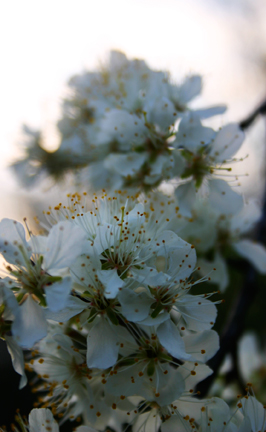
Plate 2. White blossoms in the dying light of a springtime dusk.
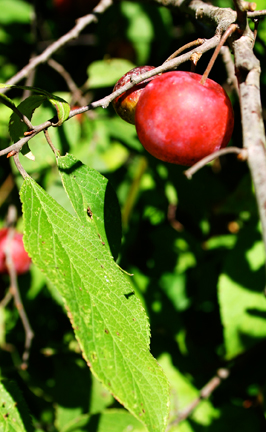
Plate 3. Ovate leaf detail and plums in late August.
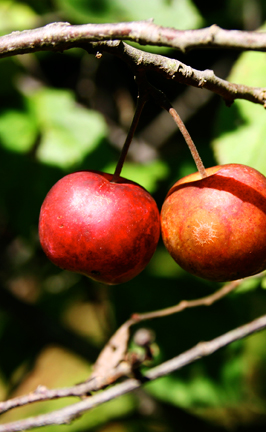
Plate 4. Appearing cherry-like, wild plum mark a uniquely sweet season for generations connected to the land.
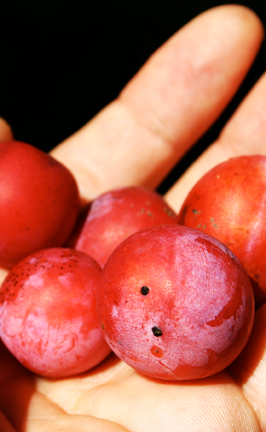
Plate 5. A handful of small plums, unprepossessing and seemingly unremarkable. The black spots are dots of sap where the plums have “healed over.”
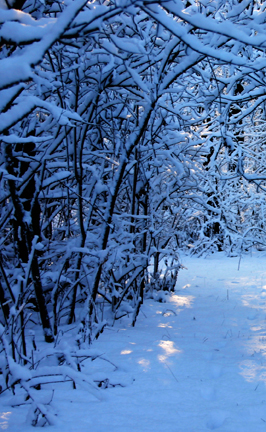
Plate 4. A blue snow marks the end of a season and the beginning of another in the ubiqutous American plum thicket.
American Plum (Prunus americana)
Size: 20-30 feet tall; leaves 3 to 4 inches long. What to look for: leaves oval, thick, leathery, with fine double teeth; flowers malodorous; fruits with bright red skin, yellow flesh; trunk distorted, many-branched. Habitat: edges of streams, swamps and fields in East, dry uplands and mountain slopes in West.
— page 312, Wernett, Susan J., et al. North American Wildlife. The Reader's Digest Association, Inc., 1986.
